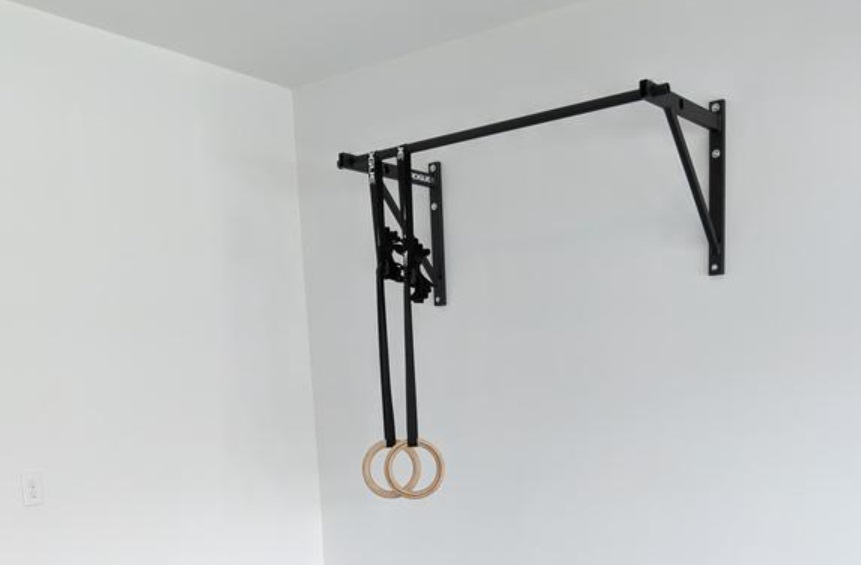Pull-Ups Will Make You a Better Climber, this is how to do them
Pull-ups are fundamental to climbing training, but they're not everything. Learn how to pull-up and why climbing may be the best training

While there exist many complex climbing programs, training often returns to persistence through fundamentals. Training for climbing does not need to be complicated. Pull-ups provide a simple method for progression.
Before we continue, pull-ups provide only one solution to a multi-faceted problem. If the goal surrounds progression in climbing, a beginner may find numerous ways to achieve the next grade. With that said, indoor climbing often revolves around positive holds at the lower difficulties. To that effect, steep wall and positive holds often describe modern indoor routesetting. The appeal of this style for commercial setting comes from the size of the grips. The fingers suffer less strain on large flat grips than the more fingery crimps of low-angle climbing.
With that said, today we are talking about how to achieve our first pull-up.
Let’s say you are brand new to climbing. Like many people, you may not be able to do a pull-up. It may even be possible that you do not know what a pull-up is. Fortunately, a pull up is pretty easily described.

Pull-up Versus Chin-up
Place two hands on the bar. Place them in a way that your palms face away from you. Hang with your shoulders slightly engaged and then pull until your chin is above the bar.
This pronation of the wrist orients your elbows further out than if you rotated your palms to face you during the pull. When we face our palms, or supinate the wrist, we isolate the biceps as opposed to the latissimus dorsi. Pronation makes a pull-up, supination makes a chin-up.
While there exist many muscular reasons that a pull-up may offer more to climbers than a chin-up, suffice it to say that a pull-up more closely reflects what we do when we climb. When we are on the wall, our wrists are pronated a majority of the time. Only on under clings do we flip our wrists into a supine position.
Now that we understand why we may prefer a pull-up to a chin-up, we can talk about how a pull-up might be useful in climbing. As previously mentioned, steep climbing has become more popular. The steeper the climb, the more effort is required from the lats to generate between holds. While stronger climbers will manage to keep their arms relatively straight even on steep angles, the shoulders and lats must remain engaged throughout the movement. Otherwise, the climber does not retain stability.

The most obvious exercise of pulling up comes from when we dead-point. A dead-point is a powerful move that hits a hold somewhat dynamically. The contraction of the lat pulls us up the wall before the lat contracts again upon catching the next hold.
Catching a hold is both an exercise in power and stability. The catching arm requires a great deal of power and strength to maintain the shoulder stability through the movement where the lower arm must squeeze to not lose tension on the lower hold. Generally, a climber will need both holds to stay on the wall.
With all of that said, we can see how some climbers can progress quickly through lower grades by completing pull ups. The issue with this sort of progression is that the climber forgoes many of the benefits they can earn through climbing while weak. Weakness provides climbers the opportunity to learn the techniques that will best serve them when they are stronger.
With that said, even the most technical climbers need power. With that understood, let us begin. How do you train to do a pull-up?
Method One
Climb in steep angles. Regardless of how indirect this sounds, if you cannot do a pull-up, it is because you have not spent a lot of time working on upper body strength. As such, the first method is easily replicated between sessions.
- Step 1: Warm up
- Step 2: Once you are near your peak ability for the session, for new climbers this will happen fairly quickly, try to complete a pull-up. You will try three to five times, each set separated by three minutes rest. This is a high-power exercise. It will become basic strength training, but for the moment, approach it as you would a heavy weight on a bench press.
- Step 3: Return to the climbing wall. Work on steep boulder problems until your body is too tired to do so.
- Step 4: Repeat every session. The first sessions will likely yield no results. Do not worry. Your body will learn from the stimulus. It will take less than three weeks.
Method Two
Complete weight-assisted pull-ups. There are two best ways to do this. The first is to place your feet in a band that is connected to the bar. By completing the strength building contraction, and the muscle building extension, through the banded exercise, you will approach the perfect pull up.
If you wish to be more precise, the best form of weight-assisted pull-ups occurs when you connect your harness directly to a rope that passes through a pulley and connects to weight. Not only does this allow you to measure how much weight you are taking off, it also allows you the same resistance through the movement.
Conversely, the band offers the most support at the bottom of the pull up and the least support at the top. It also means that you receive progressively more help as you exit the motion through the extension. Realistically, you do not want the most help during the most challenging part of the extension. It reduces the amount of muscle you can build. Similarly, on the contraction, you lose a strength building opportunity at the beginning of the motion.
A person may argue that they can adjust for that. This is fair. Calibrating bands, however, is difficult for a beginner. Calibrating weight is intuitive.
Realistically, either will work, but weight is more repeatable and more easily modified.
- Step 1: Warm up.
- Step 2: Find a weight that you can take off that allows for three to five consecutive repetitions. If using a band, then find a band that allows similar results. If you are limited by your band selection, then continue to complete reps until you find a max rep for a certain band. You should not go above 10 reps. Three to five reps are ideal because that is within our power threshold
- Step 3: Complete three or four sets.
- Step 4: Complete this exercise three times a week.
- Step 5: Reduce the weight by 2.5 to 5 pounds every week, or at your discretion. You will notice progress immediately. After three weeks, try to complete an unassisted pull-up if you have not done so already. If you are using a band, instead try and reduce the band’s thickness, or try to loop the band around your knee instead of your foot.
Whether you pursue Method 1, Method 2, or the methods described in the following video, remember that practical strength takes precedence of pull-up quantity. Method 1 has the benefit of directly applying climbing as the method for strength building.
Steep climbing often provides low amounts of bodily stress compared to isolated weight-lifting exercises. , all while targeting those muscles you will need to strengthen for the sport in composition with your pulling muscles.


